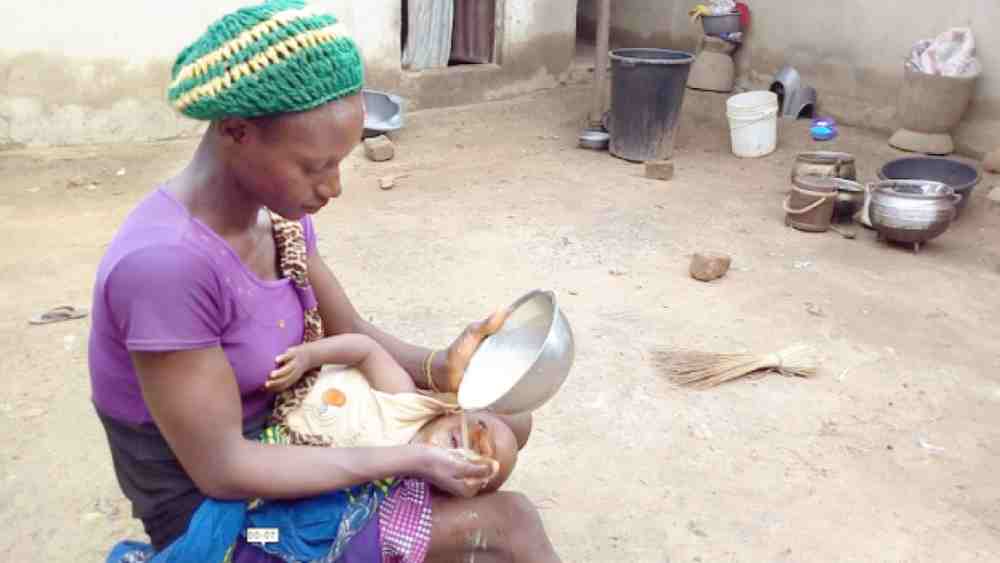When forcing a child to eat becomes life threatening
Many mothers have a hard time getting their children to eat and have devised ways to get them to eat – some of their traditional practiced methods are life threatening. Naomi is a 23-year-old housewife and mother of a seven-month-old in Paikon Kore, Abuja. Exhausted from sweeping her compound and doing other chores, she set […]

‘Force-feeding a child can cause him to aspirate,’ says, Dr. Dalhat Afegbua
Many mothers have a hard time getting their children to eat and have devised ways to get them to eat – some of their traditional practiced methods are life threatening.
Naomi is a 23-year-old housewife and mother of a seven-month-old in Paikon Kore, Abuja. Exhausted from sweeping her compound and doing other chores, she set about calming her crying lad who was recovering from ill health, with some gruel which he instantly refused.
Making no effort to cajole him to eat the meal as she grumbled under her breath, she put him on her lap, his head resting on knees and his legs securely tucked in between her thighs.
As if he knew what was to follow he began crying louder, his right hand slapping his mother’s breast as she poured the gruel from a bowl into his mouth. He forcefully swallowed the food each time his mouth opened, in wailing protest.
Observing the horrified look on our reporter’s face, she smiled gently saying, “It is our culture. This is how we feed them when they don’t want to eat.”
In response to whether the child is refusing the food due to ill health, she said, “even though he is well, he would still not eat.”
When asked to try feeding him differently and in more friendly manner, the lad refused the food, as he mother said, “Didn’t I tell you?”
Dr. Dalhatu Afegbua who saw the video of what transpired, described Naomi’s actions as forced-feeding saying, “This is a potential killer mode of feeding.”
While many attribute this forced-feeding practice to particular ethnic groups, Afegbua said it is a common old cultural practice of feeding children deemed to be refusing food. He said the practice is as common in rural areas as it is in urban communities across the country, although it is most common to parts of Southern Nigeria.
Speaking on the down side to this method of getting children to eat, he said, “The danger here is that the child so fed, can easily aspirate – the food could seep into his airways and finally into his lungs.
“The food particles or fluid cause aspiration pneumonia, which can kill the child. You the airways is so sensitive and irritable by particle as small as a speck of dust, let alone of fluid. Aspiration pneumonia is a childhood emergency with fatal consequences.”
Afegbua, a Senior Registrar at the Department of Paediatrics, Federal Medical Centre, Azare, Bauchi State, condemned the method saying, “This practice of force-feeding is bad. Some people even go as far as clipping the baby’s nostril just to prevent the child from breathing. That way in an attempt to mouth breath, food surely goes into the airways.”

Like Naomi’s child who may have refused the food due to ill health from catarrh and cough, Afegbua said, “A child refusing feeds could be as a result of 101 reasons. From unpalatable meals, through to poor bonding with the mother or psychological stress to mere ailment like catarrh. In a nutshell it is a dangerous cultural practice and paediatricians dissuade parents from.”
He advised that caregivers rather than force a child to eat should try a variety of options to encourage the child. He said they could try making the food more presentable and tasty to sometimes giving the child the opportunity to choose what he or she would like to eat.
Although some parents resort to force-feeding, many fret, cajole, threaten and bribe their picky children to have yet another morsel, eat their veggies or finish their portion. There is no need to turn meals into a frustrating tug of wills. Here are some tips.
